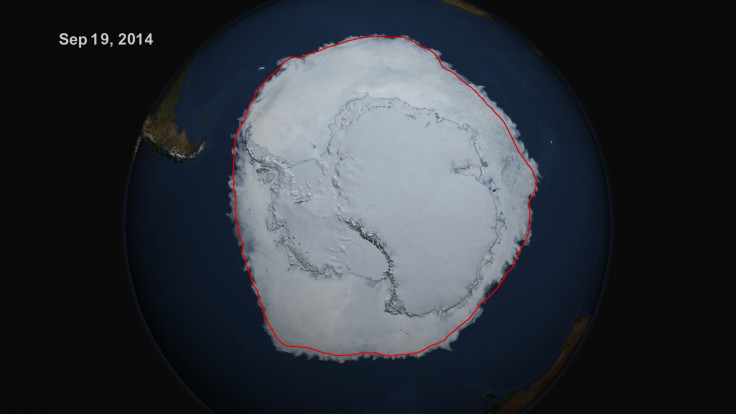Antarctic Sea Ice at Record High Levels 'Just as Expected with Global Warming'

Antarctic sea ice has reached a new record high, covering more of the southern oceans than it has since the 1970s.
However, Nasa scientists said this does not suggest a shift in global warming patterns but is instead in line with their expectations.
Claire Parkinson, senior scientist at Nasa's Goddard Space Flight Centre, said the changes in sea ice serve as a microcosm of global climate change: "The planet as a whole is doing what was expected in terms of warming. Sea ice as a whole is decreasing as expected, but just like with global warming, not every location with sea ice will have a downward trend in ice extent."
While the Arctic has lost an average of 20,800 sq/m of ice every year since the late 1970s, the Antarctic has gained 7,300 sq/m.
On 19 September, scientists recorded sea ice levels reaching 7.72 million sq/m, where it remained for several days. At its peak on 20 September, coverage reached 7.78 million sq/m.
In comparison, the average maximum extent between 1981 and 2010 was 7.23 million sq/m.
Walt Meier, research scientist for Nasa, said the warming climate had caused the sea ice extension as the shifting weather patterns have brought cooler air to Antarctic: "Part of it is just the geography and geometry. With no northern barrier around the whole perimeter of the ice, the ice can easily expand if conditions are favourable."
Other potential reasons for the increasing sea ice, experts said, could be a low-pressure system in the Amundsen Sea that is changing wind patterns in the area. Wind sweeps around the continent pushing ice so it can grow further.
Researchers also said melting ice on the edges of the Antarctic continent may lead to more fresh water that is just above freezing, so it is easily re-frozen. Similarly, changes in water circulation patterns may result in colder waters being brought to the surface which helps to grow ice.
Parkinson said: "There hasn't been one explanation yet that I'd say has become a consensus, where people say, 'We've nailed it, this is why it's happening. Our models are improving, but they're far from perfect. One by one, scientists are figuring out that particular variables are more important than we thought years ago, and one by one those variables are getting incorporated into the models."
© Copyright IBTimes 2025. All rights reserved.






















